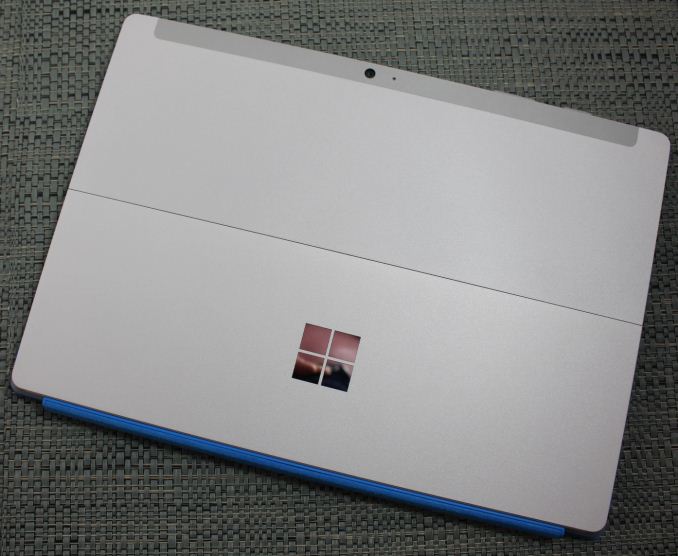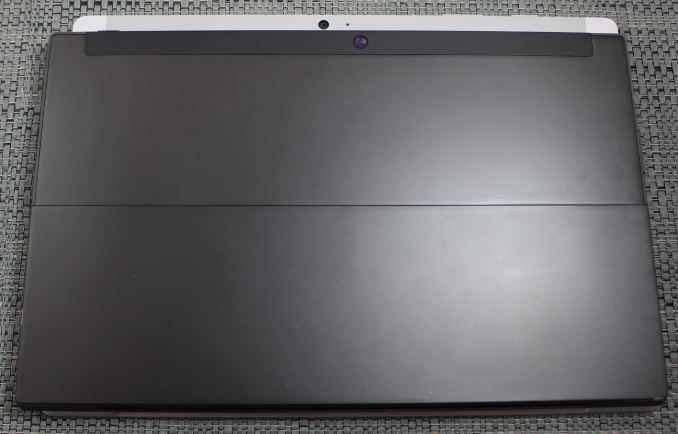The Surface 3 Review
by Brett Howse on May 4, 2015 9:00 AM EST
The Surface lineup for Microsoft has been extremely interesting to watch. What first launched in October 2012 as the Surface RT has been constantly iterated upon, and of course the Surface Pro line has evolved even faster. Surface Pro 3 has finally provided Microsoft with something that critics and consumers alike seem to have bought in to, and sales have been very strong since the Pro 3 was launched on May 20th 2014. However there has always been questions about the “consumer” version of Surface. Surface RT was, frankly, a sales disaster. The much improved Surface 2 fixed many of its shortcomings, but certainly did not set the world on fire. So now we have the third generation Surface, aptly named the Surface 3. There are a pile of changes that Microsoft has made to this generation of device, and obviously their hopes are that Surface 3 will be as popular as the Surface Pro 3 has been, but extending the device back down to a lower price point.
That price point is important. As much as the Surface Pro 3 has gained its share of fans, it is far from cheap. The most inexpensive model starts at $799, and for that you still do not get the keyboard. Surface 3 moves that bar down significantly, and the starting price is the exact same as the original Surface RT, at $499. Microsoft had to trim down the Pro model to hit this price point, but the cuts were well placed.
 Surface RT compared to Surface 3
Surface RT compared to Surface 3
I think looking at the Surface 3 in a vacuum would be improper, since the device now is really an evolution of the previous two Surface models. From a build quality standpoint, the original Surface RT was top notch, with its VaporMg case, the revolutionary kickstand, and high attention to detail for all of the aspects from buttons to display. I think in 2015 it is pretty obvious what the shortcomings of the Surface RT were though. Performance was less than acceptable with the Tegra 3 SoC on board, and Surface RT was handicapped with the confusingly named Windows RT operating system and the lack of software compatibility that goes with using an ARM CPU instead of traditional x86. Surface 2 fixed the performance issue by moving to NVIDIA’s Tegra 4 SoC, and while not the outright fastest tablet chip, it was at least in the ballpark. However it kept the Windows RT operating system at a time when everyone else had abandoned it.
Surface 3 has fixed that final issue and at the same time made some amazing improvements to the overall design and feel. Full x86 Windows is on tap, for better or for worse, and powered by a brand new SoC. This must be a special moment in history where a Microsoft built device is the launch vehicle for a brand new product from Intel. The Surface 3 is powered by the 14nm Intel Atom x7, in this case the x7-Z8700 model which is the current top of the line Atom processor. Codenamed Cherry Trail, this is the massaged Bay Trail cores now built on Intel’s now mature 14nm FinFET process, and they include the same GPU cores as Broadwell.
| Microsoft Surface Comparison | |||
| Surface 3 (Base) | Surface 3 (High) | Surface 2 | |
| Size | 10.52 x 7.36 x 0.34 inch 267 x 187 x 8.7 mm |
10.81 x 6.79 x 0.35 inch 275 x 173 x 8.8 mm |
|
| Weight | 1.37 lbs - 622 g | 1.49 lbs - 675 g | |
| Display | 10.8-inch ClearType Full HD Plus 1920x1280 resolution, 3:2 ratio 10-point multi-touch Surface Pen Support |
10.6-inch ClearType Full HD 1920 x 1080 resolution, 16:9 ratio 5-point multi-touch |
|
| Battery | 28 Wh, 13 W AC Adapter | 31.5 Wh, 24 W AC Adapter | |
| Storage | 64GB | 128GB | 32GB or 64GB eMMC |
| RAM | 2GB | 4GB | 2GB |
| CPU | Atom x7-Z8700 Quad Core 14nm 1.6 GHz Base Frequency 2.4 GHz Burst Frequency |
NVIDIA Tegra 4 4x ARM Cortex-A15 @1.7GHz |
|
| WiFi | Marvell 802.11ac + BT 4.0 LTE Models at a later date |
802.11n + BT 4.0 | |
| Ports | USB 3.0, Mini-DisplayPort, microSD, Micro USB charging, 3.5mm Headset Jack |
USB 3.0, micro-HDMI, microSD, proprietary charging | |
| Software | Windows 8.1 Office 365 Personal with 1TB OneDrive (1-year) |
Windows RT 8.1 Office 2013 RT Home & Student Edition |
|
| Front Camera | 3.5 MP | 3.5 MP | |
| Rear Camera | 8.0 MP with Autofocus | 5.0 MP | |
| Operating System | Windows 8.1 64-bit | Windows RT 8.1 | |
| Warranty | 1-year limited | 1-year limited | |
| Price | $499 | $599 | $449 |
In addition to the new SoC, Surface 3 can be purchased with up to 128 GB of eMMC storage, and the higher storage models also come with 4 GB of RAM. This compares to the base model which is 2 GB of RAM and 64 GB of storage, which is already one of the big improvements Microsoft has made with Surface. 32 GB of storage on a Windows tablet is really the bare minimum required, and the move to 64 GB as the base is going to make this tablet far more usable. You can of course add more storage with a micro SD card, but until Windows gets the great SD card support from Windows Phone, it still means that you need to manage your storage more than you should have to.
There are so many changes with the Surface 3 that really, this is likely the Surface that most people wanted from day one, but did not know it. First up is the new (again) kickstand.










265 Comments
View All Comments
BlueBomberTurbo - Thursday, May 7, 2015 - link
Adobe only has mobile apps for iOS and Android. Not very useful for any serious production, and a stopgap measure at best until you get to a real computer. Surface 3 can run the real desktop software out of the box. And yes, you can use PS and LR, since I was able to use them on my Lenovo Thinkpad 8 (Atom Z3770 + 2GB/64GB), and the Surface 3 has a significant bump in GPU power.AlluringRaja - Tuesday, May 5, 2015 - link
Nice review. Thanks to AnandTech.romprak - Tuesday, May 5, 2015 - link
Great, thorough review - we are picking up ours this afternoon at our local BestBuy. Looking forward to playing around with it today. It will be replacing my wife's 2009 iMac that is on its last legs (overheats and I think the GPU might be failing, it gets really hot and Yosemite has just made things worse). She manages all her homeschooling and her own tasks on that computer. I'm going to give her my old 27" monitor for when she is docked at home (my Surface Pro 3 now runs a 34" Ultrawide Dell), but otherwise she can just use it on her lap for managing the kids' curriculum, etc.damianrobertjones - Tuesday, May 5, 2015 - link
"This saves a bit of weight, but also prevents the keys from being folded behind and making for an uncomfortable device to hang on to"Have you ever thought of turning the keyboard around? You then hold onto the flat surface with the keys pressed to the back of the S3.
Brett Howse - Tuesday, May 5, 2015 - link
Nope I've never thought of that, but I think I'd still rather just take it off when needed.BlueBlazer - Tuesday, May 5, 2015 - link
The 4GB RAM version has higher benchmark scores at http://www.notebookcheck.net/Microsoft-Surface-3-T... possibly due to dual channel memory used. Will there be a review of that 4GB RAM version?Brett Howse - Tuesday, May 12, 2015 - link
Hi sorry for the delayed response on this I wasn't able to check dual channel with CPU-Z. The 2 GB model is dual-channel with 2x1GB DIMMs.yefi - Tuesday, May 5, 2015 - link
Liking the mini-dp on this. Shame it can't support 4k according to the SoC's datasheet, but it would be pretty sweet to hook this up to a 30" monitor in any case.damianrobertjones - Wednesday, May 6, 2015 - link
I was under the impression that it DOES support 4k but only @30Hzyefi - Wednesday, May 6, 2015 - link
It says the hdmi can do 4k @30Hz, but doesn't mention anything for displayport. Would be nice if it could do it.